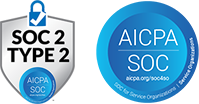What Is Employee Retention?
Employee Retention refers to the strategies and practices an organization uses to keep its workforce engaged, satisfied, and committed over time. It encompasses onboarding, development pathways, recognition programs, competitive compensation, and work-life balance initiatives—all designed to minimize voluntary turnover and preserve critical skills and knowledge within the organization.
Why Employee Retention Matters
High turnover costs run beyond recruitment and training expenses; they erode morale, disrupt team dynamics, and drain institutional knowledge. By focusing on retention, companies maintain productivity, sustain customer relationships, and protect their employer brand. Consistently retaining talent also signals a healthy culture, attracting new hires who value stability and growth opportunities.
Where Employee Retention Is Used
Retention strategies play a pivotal role across:
- Technology Firms: Keeping engineers and product specialists through continuous learning and peer communities.
- Healthcare & Life Sciences: Retaining clinicians and researchers by aligning roles with career ladders and flexible scheduling.
- Retail & Hospitality: Reducing front-line churn via recognition programs and clear advancement tracks.
- Manufacturing: Mitigating skilled-labor shortages through apprenticeship conversions and shift-premium incentives.
- Professional Services: Holding on to consultants and advisors with mentorship, profit-sharing, and client-relationship ownership.
Employee Retention Key Benefits
- Cost Savings: Lowers recruitment and onboarding expenses by reducing voluntary exits.
- Knowledge Continuity: Preserves expertise, ensuring critical processes and client engagements remain uninterrupted.
- Stronger Engagement: Engaged employees outperform peers by up to 23% and act as advocates for the brand.
- Culture Stability: Long-tenured staff anchor organizational values, guiding newcomers and supporting change.
- Enhanced Innovation: Experienced teams iterate faster, leveraging deep context to solve complex problems.
Best Practices & Examples
- Five C’s of Retention:
- Compensation: Ensure pay and benefits match market and role expectations.
- Culture: Foster an inclusive, values-driven environment.
- Career: Offer clear development paths and upskilling opportunities.
- Connection: Promote strong manager-employee relationships and peer networks.
- Communication: Maintain transparent, frequent feedback loops.
- Three R’s of Retention:
- Recruitment Fit: Hire for alignment with culture and growth potential.
- Recognition: Reinforce desired behaviours through timely acknowledgment.
- Rewards: Tie incentives to both performance and tenure milestones.
- Real-World Example: A global software provider introduced quarterly “stay interviews” and personalized development budgets. Within a year, turnover among high-performers dropped by 18%, saving the company over $2 million in hiring costs.
Conclusion
Employee Retention is a strategic imperative that underpins organizational resilience. By weaving together competitive compensation, purposeful culture, clear career paths, and ongoing recognition, companies not only curb costly attrition but also ignite a virtuous cycle of engagement and growth—ensuring their best talent stays and thrives.
Employee Retention FAQs
Q: What are the 5 C’s of retention?
The five C’s are Compensation, Culture, Career, Connection, and Communication—each critical to creating an environment where employees feel valued, supported, and motivated to stay.
Q: What are the 3 R’s of employee retention?
The three R’s are Recruitment Fit (hiring aligned talent), Recognition (acknowledging contributions), and Rewards (incentives tied to performance and loyalty).
Q: What is an example of employee retention?
A financial services firm launched “career sprint” programs—three-month cross-functional projects with dedicated mentorship. Participants’ retention rose 25 percent as they gained new skills and visibility.
Q: What is the concept of retention?
Retention is the concept of deliberately designing workplace experiences—through policies, practices, and culture—that encourage employees to remain with an organization long term, minimizing voluntary departures.




